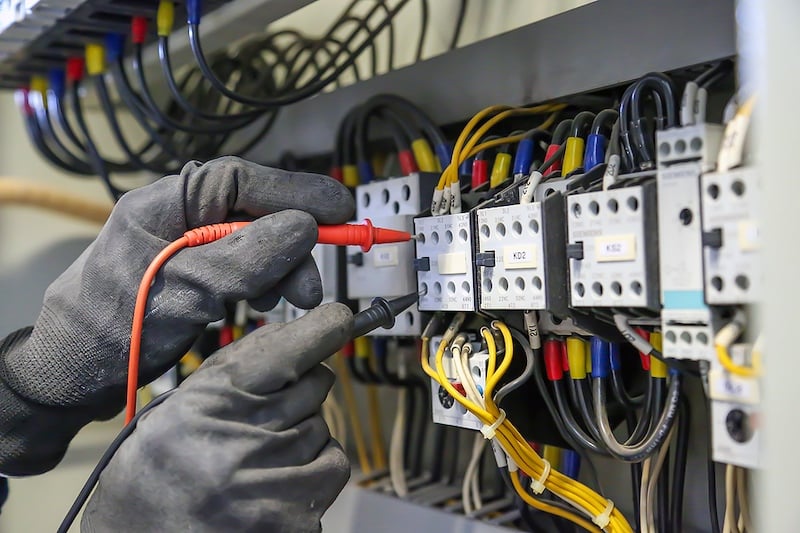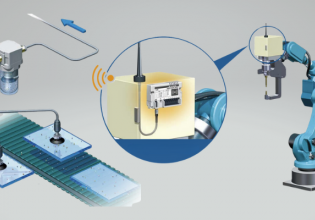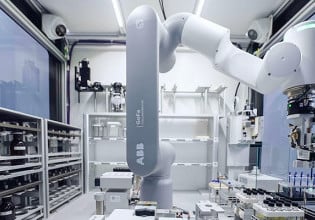The Importance of Neutral Wire in 3-Phase Systems
Learn about the importance of wiring in 3-phase systems and how to complete this wiring in various industrial scenarios and control cabinets.
Every industrial electrician or engineer knows about 3-phase power and the wiring involved. Perhaps they know about this from hooking up a 3-phase motor or examining the inputs and outputs of a set of contactor terminals.
In any case, there is an intriguing contrast between 1-phase and 3-phase wiring. In 1-phase, a neutral wire (often white or blue) will always be present. But in a 3-phase system, sometimes the neutral wire exists, and sometimes it doesn't. Even if it does exist, load devices don't include a connection for neutral. Why?
Neutral in a 3-Phase System
In an alternating (AC) system, the neutral wire is a non-energized wire that carries current. It's non-energized because it is not connected to any active energy source from the main incoming service. That's the job of the 'line' conductor. It carries current back to the return of the main service panel, which should have a connection directly to the earth ground.

An industrial technician wiring in an AC system.
Due to the Earth's ground connection, the neutral wire will not supply energy if it touches a grounded object - no spark will occur, and no current will travel. The difference between neutral and ground is addressed in other articles, but an interesting note remains.
In examining a 3-phase power system, some power supplies will include the three-phase lines, neutral, and ground. Others may omit the neutral, leaving only three lines plus ground. If neutral is needed to carry current, why can some system leave this wire out of the connections?
1-Phase Structure
When one individual phase line is used to supply energy to a load device, there must be a return path for the circuit to be completed. The neutral and ground wires provide that return path and a redundant return path in case of faults.
In this sense, you could use a 3-phase power system, then access one line plus the neutral, and you have gained a 1-phase supply. This is how most power distribution provides 1-phase power into a house or shop. It started as 3-phase power, but that can easily be turned into three separate 1-phase supplies, which would each be directed to small communities.
Since there is only one powered line, a second wire must provide the return path. This is the neutral wire. If you were to connect a 1-phase motor or any normal light or household device, you would connect both the line input and the neutral. The bare ground only provides a backup return path in case of problems.
Because of the structure of 1-phase power like you find in normal outlets and lighting circuits, there will always be equal current in the line and neutral wires.
One additional note, a 240 volt 1-phase supply consists of 2 line conductors. If those are used, the neutral is not necessary for a similar reason as the 3-phase explained next.
3-Phase Loads
In the 3-phase power system, it's quite different. Since the lines are all alternating at the same frequency, only delayed by ⅓ of a rotation for each line, there will always be at least one wire with a forward current and one with reverse current with respect to the load. No two wires will ever have the same current.

An engineer measuring both single and three phase power. Image used courtesy of Fluke
At any given moment, if you add up the current in all three phase wires, the total sum of the current to or from the load is 0 amps. This does not mean that there is no current. It simply means that there is no extra current going to or from the load between the shared current load of all three lines. Even if a neutral wire were provided to the load, it would never be used.
This is why 3-phase load devices only have three line inputs. The ground wire still must be connected to provide the redundant safety connection in case of failure. If a line touches the outside case, there is no longer a shared zero-sum of current between the three line inputs, so the ground must exist so the excess current can safely trip the overcurrent device.
3-Phase Sources
It might now be clearer why load devices only use the line inputs, but another question arises with 3-phase sources. Sometimes, they have a neutral wire. Other times they don't.
If a 3-phase power panel provides a neutral wire in addition to the three lines and ground, then it indicates either a 4-wire Y configuration or a 4-wire Wild-Leg Delta configuration. It's most likely the Y system if it's a modern service panel.

A Modular three-phase circuit breaker, phase control relay with adjustments, level control relay, two intermediate relays in a control cabinet.
The neutral wire's purpose is that it allows the connection of both 3-phase loads just like normal, but it also allows an electrician to use any of the three lines, plus the neutral, to form a 1-phase supply. There can be three equal 1-phase supplies. This is the normal supply for industrial lighting circuits and receptacles for the main offices and 1-phase equipment.
The Wild-Leg Delta model is slightly less common but allows 3-phase loads and multiple 1-phase voltages, all with one supply and no extra transformers. This is helpful in some cases, but it is hard to balance the three lines properly and be less than ideal for equipment longevity.
Summary
Neutral wires are always necessary to complete 120-volt circuits such as those in a residential or receptacle/lighting circuit. In the case of 240-volt circuits and 3-phase circuits, the neutral conductor is not necessary as long as the sum of the currents on the energized lines is a total of 0 amps.
Want to learn more about grounding and power in control systems? We have plenty more!
- Fundamentals of Grounding in Automation Control Systems
- The Importance of Grounding Equipment for Safety
- Understanding Differences Between Power and Ground Side Switching
- Grounding for Control Transformers
- Grounding DC Power Supplies
- Negative Effects of Grounding (Earthing) a DC Power Supply
- The Difference Between Ground and Neutral Conductors in Control Wiring






